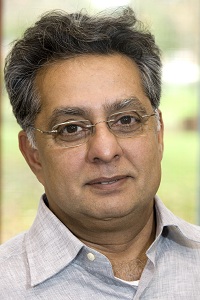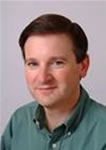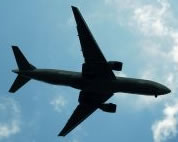Councils Move Against Heathrow Expansion
All-party group of local authorities want to eliminate airport as growth site
A coalition of councils has presented a combination of environmental factors and physical constraints which make further expansion at the airport untenable now and in the future urging it be removed from the list of potential sites for new runways in the south east of England.
They say that new runways at Heathrow would not guarantee better connections between the UK and emerging trading partners. Airlines can choose where they fly and will naturally use extra runway slots to increase services to established, profitable destinations rather than risky new routes to places like China.
Subjecting the most densely populated part of the country to new flightpaths and environmental damage without a secure economic benefit would be a reckless gamble, according to the boroughs.
A commission led by Sir Howard Davies has been set up by the Government to investigate where additional aviation capacity should be developed. It is not due to report back until 2015.
The councils say that ruling Heathrow out of the debate now would bring the decision forward by at least two years and end uncertainly hampering the industry.
Wandsworth, Richmond, Hillingdon, Hounslow, Kingston, Windsor and Maidenhead, Hammersmith and Fulham, Ealing, and Kensington and Chelsea and Lewisham Councils are behind the move and have taken their case to the Department for Transport.
The authorities are members of the 2M campaign group which blocked the previous Government’s plans for a third Heathrow runway in the High Court in 2010.
Their evidence includes:
Speculative economic case
Heathrow has based its case for expansion on the promise of more flights to emerging trading partners.
But neither the airport nor the Government can dictate where planes fly. Airlines will always priorities profitable routes, not those which serve the best interests of the UK economy.
British Airways has recently acquired BMI’s runway slots at Heathrow and is now using these for profitable, easy to fill services to Alicante, Rotterdam and Leeds Bradford – not risky new routes to China.
Capacity at the airport has increased by more than 150,000 flights a year since 1990, but the number of destinations served has dropped from 227 to 180. More capacity does not automatically lead to better business connections for London.
Can’t fit four runways
The Heathrow site is not big enough to accommodate four runways. It will always be too physically constrained to provide a competitive, efficient hub.
The ‘hub’ airport model requires large numbers of short-haul ‘feeder’ flights to land in the same time window as longOctober 30, 2012ions.
This causes sharp peaks in demand during the day when a hub is under pressure to handle high volumes of plane and passenger movements. Charles de Gaulle, Heathrow’s nearest rival, has four runways. Frankfurt also has four and Schiphol has six.
If London needs a hub, the Davies Commission should focus on viable locations for a competitive four runway facility.
Environmental impacts
Today, nitrogen dioxide levels around Heathrow are in breach of EU standards and the local road network is severely congested. Adding more planes and more passengers would exacerbate emissions pile more pressure on the road system.
The airport’s west London location means that flightpaths run directly over the most densely populated area in the country. No other major airport is so poorly positioned and Heathrow is responsible for more than a quarter of all those people affected by aircraft noise in Europe. Increasing capacity here would have greater noise impacts than at any of the alternative locations.
Flightpath backlash
Further expansion will severely increase the noise misery suffered by surrounding communities and opposition is far stronger and more organised here than at any other potential location. Campaigners include councils and MPs and from all major political parties, the Mayor of London, environmental groups, civic societies and entire west London communities.
 Cllr Ravi Govindia, Leader of Wandsworth Council, said: “Even if two new runways were added to Heathrow we cannot be sure of getting new routes to emerging markets. Since Terminal 5 opened the number of destinations served has actually decreased. Expanding this airport further is too reckless a gamble when the environmental price is so high.
Cllr Ravi Govindia, Leader of Wandsworth Council, said: “Even if two new runways were added to Heathrow we cannot be sure of getting new routes to emerging markets. Since Terminal 5 opened the number of destinations served has actually decreased. Expanding this airport further is too reckless a gamble when the environmental price is so high.
“The Davies Commission should focus its attention on viable locations and accelerate the decision making process.”
Cllr Jagdish Sharma, Leader of Hounslow Council, said: “Heathrow is a vital part of our local economy but it needs to be better, not bigger. As community leaders we need to debunk the myths around the absolute need for more runway capacity. In essence it is simple - Heathrow and the airlines need to make better use of what they have. If the airport grows, the burden for our communities of noise and pollution and pressure on the local road network becomes worse and it is already intolerable.”
 Cllr Nicholas Botterill, H&F Council Leader, says: “The decision to locate the UK’s main airport at Heathrow was taken over 65 years ago at the end of the Second World War and it is simply now in the wrong place.
Cllr Nicholas Botterill, H&F Council Leader, says: “The decision to locate the UK’s main airport at Heathrow was taken over 65 years ago at the end of the Second World War and it is simply now in the wrong place.
“Britain is an island and it makes no sense for thousands of planes to roar over densely populated areas where millions of people live when they could be making their final approach over water if the airport was closer to the coast. A pint sized extra runway at Heathrow would do little to improve Britain’s economic prospects but would allow a big increase in aircraft noise by introducing yet another flight-path over our heads.”
 Cllr Julian Bell (pictured left), Leader of Ealing Council, said: “A third runway at Heathrow would bring more disruption, noise and pollution to the residents of West London. As well as the harmful effects on people’s health, the number of flights across the borough would rocket and the already stretched road network would buckle under the strain of more traffic.”
Cllr Julian Bell (pictured left), Leader of Ealing Council, said: “A third runway at Heathrow would bring more disruption, noise and pollution to the residents of West London. As well as the harmful effects on people’s health, the number of flights across the borough would rocket and the already stretched road network would buckle under the strain of more traffic.”
Lord True, Leader of Richmond Council, said: “No sensible person would conceive of building a major airport where Heathrow is currently sited and no sensible person would consider increasing its size. A lot of time, money and quite unnecessary angst to hundreds of thousands of people could be saved by leaving this idea where it was put in 2010 – in the rubbish bin.”
October 29, 2012
